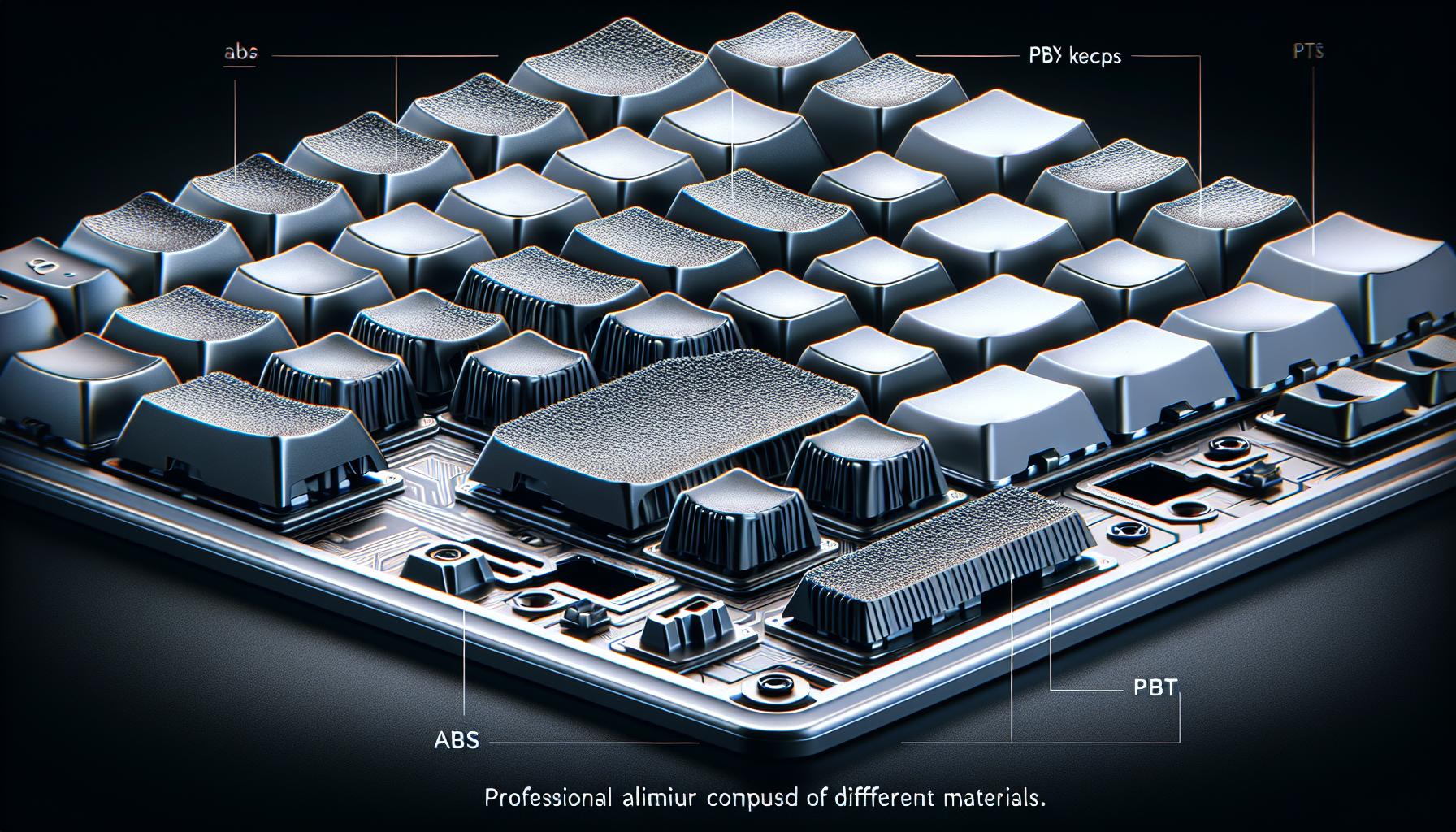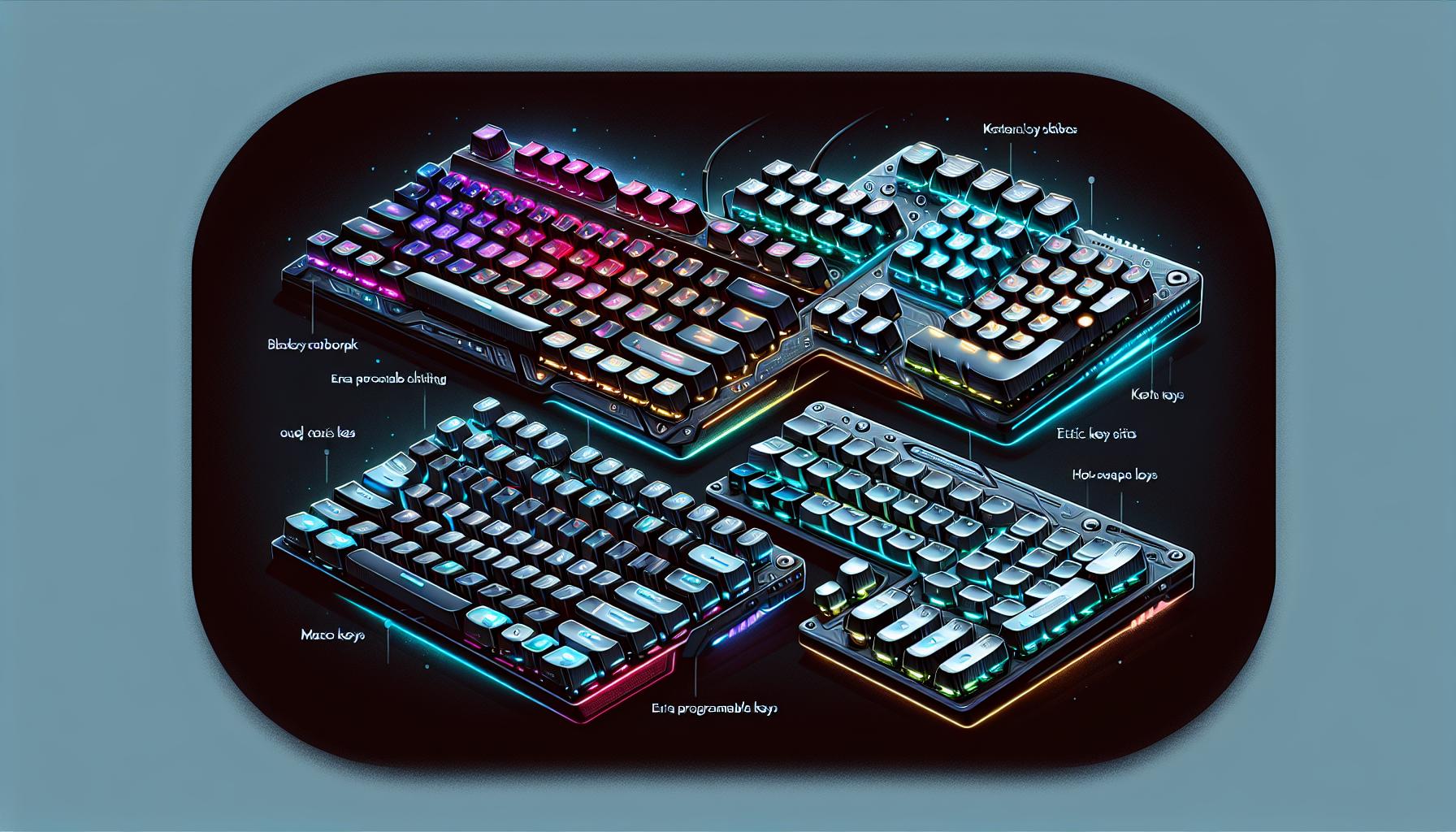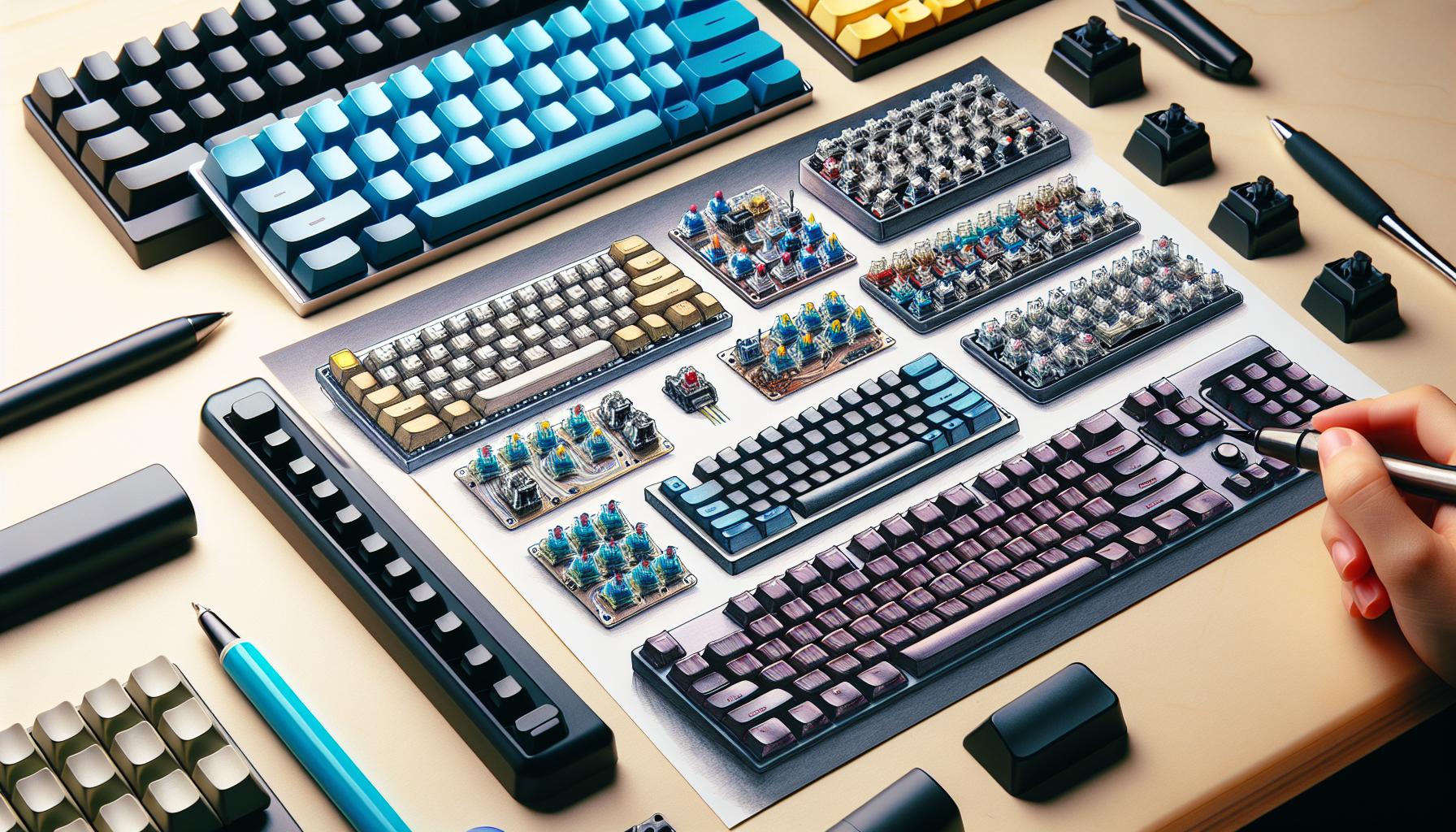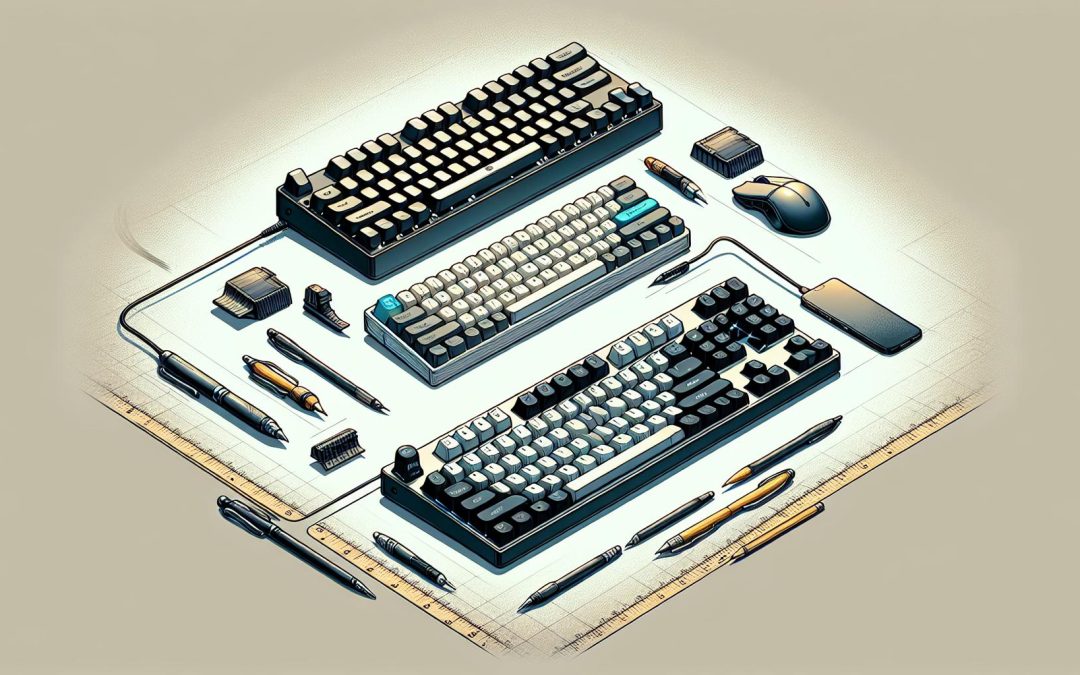In the world of mechanical keyboards, finding the perfect blend of quality sound and affordability can be a challenge. Yet, for those on a budget, it's not impossible. The quest for the best sounding keyboard under $200 is a journey filled with surprises, offering a variety of options that don't skimp on performance.
With a plethora of switches, materials, and designs, these keyboards promise to elevate your typing experience without breaking the bank. Whether you're a gamer, a writer, or just someone who appreciates the satisfying clack of a good keyboard, there's something out there for you. Let's dive into the world of affordable mechanical keyboards and discover which ones hit the sweet spot between cost and acoustic pleasure.
Understanding Keyboard Switches
When venturing into the realm of mechanical keyboards, especially when the quest revolves around finding the best sounding keyboard under $200, it's imperative to grasp the basics of keyboard switches. These tiny mechanisms beneath each key not only influence the tactile feedback but play a crucial role in the keyboard's acoustic signature. Essentially, switches are the backbone of a mechanical keyboard's performance and feel.
There are mainly three types of mechanical switches: linear, tactile, and clicky. Each type caters to different preferences in sound and feel.
- Linear switches offer a smooth keystroke with no tactile bump or noise aside from the key bottoming out. They're often favored by gamers for their swift and silent action.
- Tactile switches provide a noticeable bump at the actuation point, giving typists a confirmation of a keypress without having to bottom out. This results in a quieter experience compared to clicky switches, yet with satisfying feedback.
- Clicky switches are renowned for their audible click sound at the point of actuation, accompanying the tactile bump. Typing enthusiasts and those who enjoy auditory feedback often prefer them, though they might not be the best choice for shared spaces due to their noise level.
Here's a quick overview of how these switches impact the typing experience:
| Switch Type | Tactile Feedback | Sound Level |
|---|---|---|
| Linear | No | Low |
| Tactile | Yes | Medium |
| Clicky | Yes | High |
The materials used in constructing switches also contribute to the keyboard's sound profile. For instance, switches with plastic housings tend to produce a higher-pitched sound compared to those with metal housings. Additionally, the choice of keycaps, whether made of ABS (acrylonitrile butadiene styrene) or PBT (polybutylene terephthalate), can affect sound transmission and durability, with PBT keycaps being denser and less prone to becoming shiny with use.
Materials Matter: Build Quality and Sound

When venturing into the realm of the best sounding keyboards under $200, it's crucial to consider not just the switches but also the materials used in the construction of the keyboard. The choice of materials can greatly affect both the build quality and the sound profile of the keyboard, making it an essential factor for potential buyers to consider.
Firstly, the keyboard frame itself can be made from various materials, including plastic, aluminum, or even steel. Each material offers its own set of benefits. For example, aluminum frames are renowned for their sturdiness and ability to provide a more resonant typing sound, which many users find appealing. On the other hand, keyboards with plastic casings are often lighter and more affordable, though they may not offer the same level of acoustic satisfaction or durability.
Another critical aspect is the keycap material. ABS (Acrylonitrile Butadiene Styrene) and PBT (Polybutylene Terephthalate) are the two most common types of materials used for keycaps. ABS keycaps are softer and may develop a shiny patina over time due to wear, whereas PBT keycaps are more durable, resistant to shine, and generally provide a slightly different, often preferred, sound profile when typing.
Impact of Materials on Sound
The difference in sound between ABS and PBT keycaps can be subtle yet significant for users who prioritize typing sound. PBT keycaps tend to produce a thockier and more solid sound, while ABS keycaps often result in a lighter and clackier noise. This variance in sound is due to the different densities and textures of the materials.
Build Quality and Lifespan
The materials used not only impact the sound but also the overall build quality and lifespan of the keyboard. A keyboard with an aluminum frame and PBT keycaps, for instance, is likely to withstand heavy use and last longer than a keyboard with a plastic frame and ABS keycaps. This durability is something to consider for anyone looking for a long-term investment.
Design Elements that Influence Sound

When embarking on the journey to find the best sounding keyboard under $200, it's crucial to consider not just the materials used in construction but also the specific design elements that play a significant role in shaping the sound profile. These aspects include the keyboard's structure, the plate material, and the mounting style, each offering a unique contribution to the auditory experience.
Keyboard Structure
The overall structure of a keyboard, including its case and frame, significantly impacts its sound. Keyboards with a solid and heavy frame, such as those made from aluminum, tend to produce a resonant and richer sound. In contrast, keyboards with lighter plastic frames might not offer the same depth of sound, but they have their own appeal with a brighter and sharper acoustic signature. The case's shape and size also influence sound resonance, with larger cases often enhancing the echo and depth of each keystroke.
Plate Material
Within the keyboard, the plate material holds a pivotal role in sound modulation. The plate is where the switches are mounted, and it can be made from various materials including:
- Aluminum
- Steel
- Brass
- Polycarbonate
Each material offers a distinct sound experience. For instance:
| Material | Sound Characteristic |
|---|---|
| Aluminum | Crisp and resonant |
| Steel | Brighter and louder |
| Brass | Warm and full-bodied |
| Polycarbonate | Soft and dampened |
Mounting Style
Another essential design element is the mounting style, or how the switches are attached to the keyboard’s plate and case. The most common mounting styles include:
- Top Mount - where the plate is mounted to the top of the case, leading to a firm typing experience.
- Bottom Mount - attaches the plate to the bottom of the case, offering a softer feel.
- Gasket Mount - involves the use of gaskets that cushion the plate and case connection, resulting in a flexible and muted sound profile.
Top Picks for Best Sounding Keyboards Under $200

When it comes to finding the best sounding keyboards under $200, it's not just about the price. It's about the value you get in terms of sound quality, build, and overall typing experience. The market is flooded with numerous options, but a few stand out due to their superior acoustics, quality construction, and user satisfaction. Here are some top picks that have earned their spots for being the best in class without breaking the bank.
Keychron K8
The Keychron K8 takes the lead for its versatility and splendid sound profile. Designed for typists, gamers, and professionals alike, this mechanical keyboard offers a unique combination of tactile feel and auditory bliss. It features a hot-swappable option allowing users to switch between Gateron switches, known for their smooth keystrokes and pleasing sound. Its aluminum frame and dense plastic body contribute to a resonant, yet not overwhelming, sound signature. What sets the K8 apart is its ability to cater to both Mac and Windows users, offering flexibility in connectivity with both wired and Bluetooth options.
Tecware Phantom 87
For those who favor a compact design without sacrificing sound or functionality, the Tecware Phantom 87 emerges as a top contender. This tenkeyless mechanical keyboard is praised for its exceptional build quality at an affordable price point. It comes with Outemu switches, which are perfect for users looking for a clicky or tactile feedback. The Phantom 87's dual-layer PCB and plate-mounted switches add to its durability while enhancing the keyboard's overall sound. Its customizable RGB lighting is just icing on the cake, allowing users to personalize their setup while enjoying a robust typing experience.
Glorious GMMK Compact
The Glorious GMMK Compact deserves a mention for its modular design and impressive sound. This 60% keyboard is a dream for enthusiasts who crave customization. It's fully hot-swappable, meaning users can experiment with different switches to find their desired sound and feel without any soldering required. The GMMK Compact comes with a sturdy aluminum faceplate, ensuring a solid base that aids in producing a clean, satisfying sound upon each keystroke. Whether it's for gaming or typing, this keyboard offers a blend of performance, aesthetics, and sonic pleasure.
Comparing Acoustic Performance

When diving into the world of mechanical keyboards under $200, acoustic performance often plays a crucial role in a user's satisfaction and overall experience. Each keyboard model brings its unique sound signature to the table, influenced by factors such as the switch type, build material, and design nuances. This section explores how the Keychron K8, Tecware Phantom 87, and Glorious GMMK Compact stand up against each other in terms of acoustic qualities.
Starting off with the Keychron K8, this keyboard earns high marks for its warm and rich sound profile. Thanks to its hot-swappable Gateron switches, users have the flexibility to tailor the acoustic output to their liking. Whether it's the clicky feedback of Gateron Blues or the quieter, softer bump of Gateron Browns, the K8’s aluminum frame amplifies the chosen sound in a most satisfying way. Furthermore, its ability to dampen unwanted vibrations contributes to a clean and focused audio experience during long typing sessions.
Moving on to the Tecware Phantom 87, it’s praised for its sharp and precise acoustics. Outfitted with Outemu switches known for their distinct tactile feedback, the Phantom 87 delivers a snappy and energetic typing noise that can be quite invigorating. Its compact design, alongside the dual-layer PCB, work together to enhance the sound quality, ensuring durability doesn’t come at the cost of acoustics. Each keystroke produces a satisfying click, making it a joy for users who appreciate audible confirmation of their input.
Last but not least, the Glorious GMMK Compact stands out due to its modular design and the sheer variety of sounds it can produce. With its hot-swappable feature, users can experiment with an array of switches without the need for soldering, making it a playground for sound enthusiasts. The sturdy aluminum faceplate of the GMMK Compact plays a significant role in its sound signature, giving it a robust and resonant sound that differs significantly from the more muted tones of keyboards with plastic cases.
| Feature | Keychron K8 | Tecware Phantom 87 | Glorious GMMK Compact |
|---|---|---|---|
| Switch Type | Gateron | Outemu | Any (Hot-Swappable) |
Conclusion
Finding the perfect mechanical keyboard under $200 that doesn't compromise on sound quality is definitely achievable. The Keychron K8, Tecware Phantom 87, and Glorious GMMK Compact each offer a unique auditory experience that caters to different preferences. Whether it's the warm tones of the K8, the precision of the Phantom 87, or the versatility of the GMMK Compact, there's something for everyone. These keyboards prove that excellent sound and performance can come without a hefty price tag, making them ideal choices for users who prioritize both.
Harlan Kilstein began playing piano during covid with no piano background at all. He taught himself how to play learning what to do and what not to do.
Today he's an advanced intermediate player and can help you grow in your skills because he learned all this on his own.







